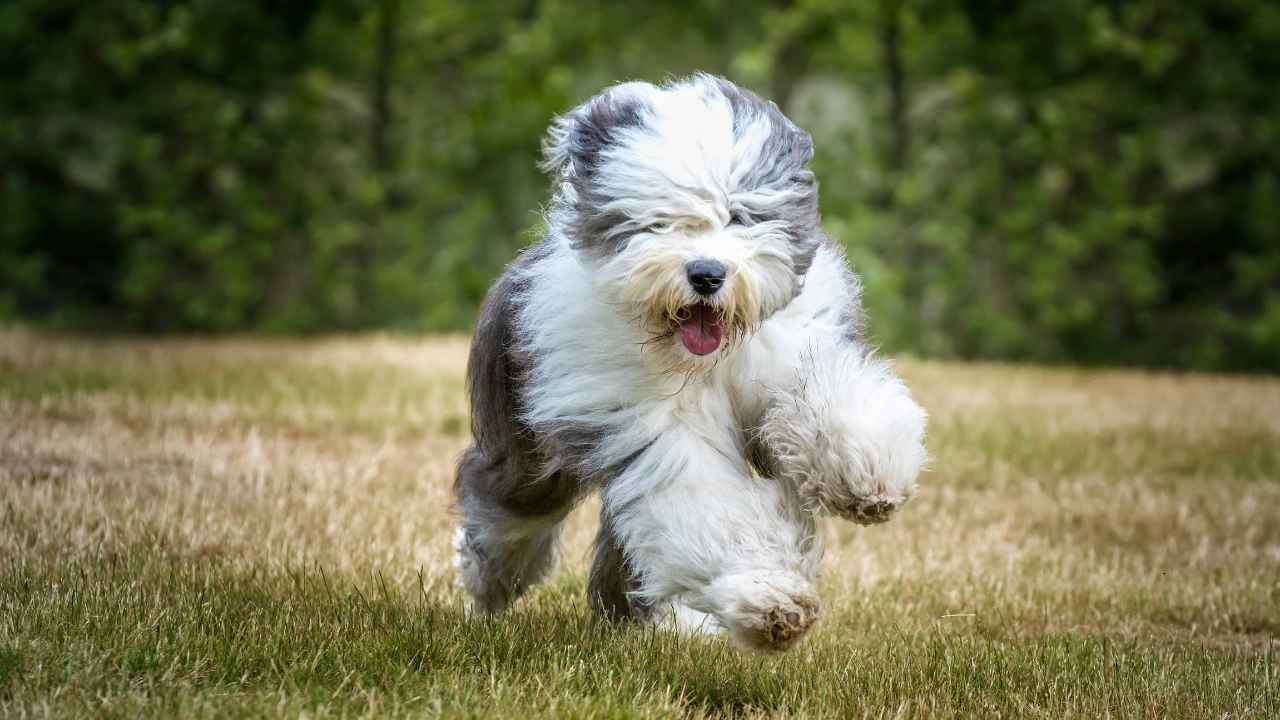Choosing the right dog for your home involves more than just picking the cutest face; it’s about finding a breed that fits your lifestyle. While temperament, friendliness with children, and compatibility with other pets are top priorities, one often overlooked detail is coat type. For some, the sight of a fluffy, tousled pup is irresistible. Others may hesitate at the thought of grooming a shaggy coat on a regular basis.
Shaggy dog breeds have a charm all their own. Their flowing fur, scruffy beards, and wild, woolly coats make them stand out in any crowd. Though their grooming needs may be more involved, these lovable dogs more than make up for it with their affectionate nature, intelligence, and loyalty. Whether they’re bounding across the backyard or snuggling on the sofa, shaggy dogs are sure to bring joy, and a few stray hairs, into your life.
So, if you’re ready to commit to a little extra coat care, a shaggy companion might just be your perfect match.
Shaggy Dog Breeds
1. Old English Sheepdog
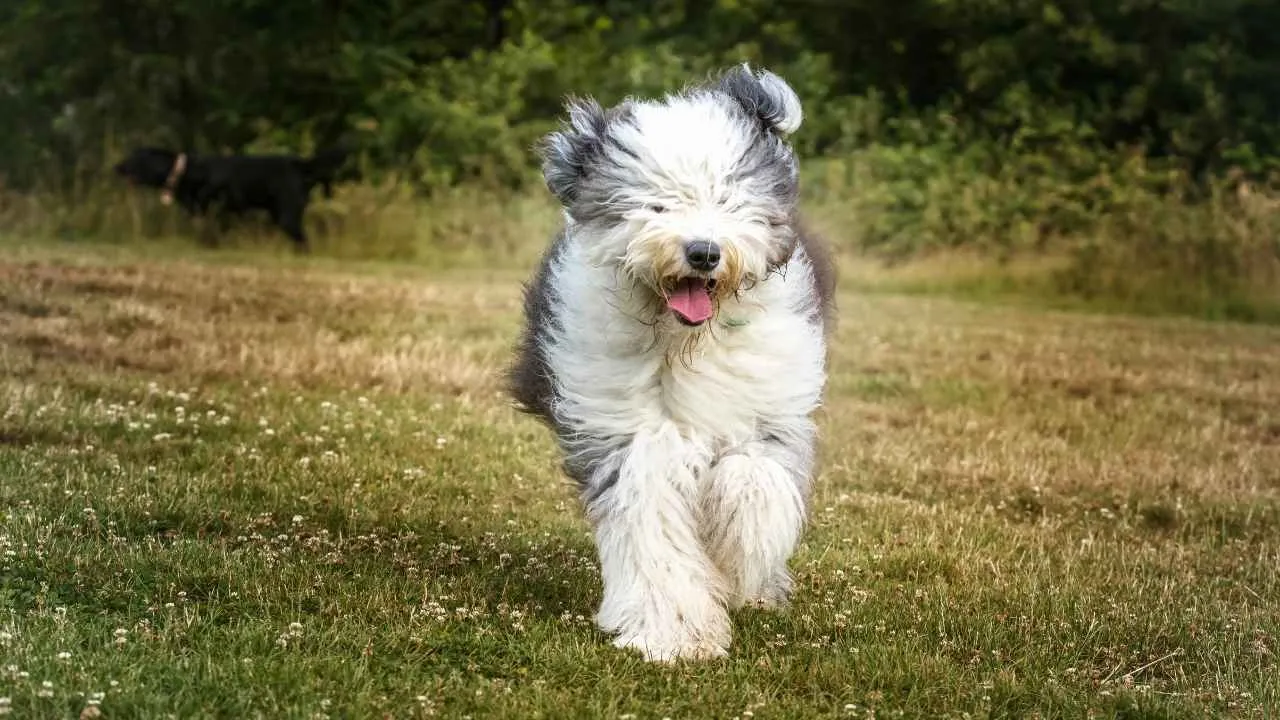
When you imagine a classic shaggy dog, chances are you’re picturing the Old English Sheepdog. With its large frame and cloud-like coat, this breed is unmistakable. Originally bred for herding in England, these dogs are strong, intelligent, and naturally energetic. Their herding instincts can be so strong that they might try to gently round up children or other pets at home.
Despite their size and power, these large dogs are gentle, affectionate companions who thrive on being part of the family. PetMD mentions that Old English Sheepdogs are not overly noisy, though they might warn you when someone or something nears your home. With proper training, their barking can be kept under control.
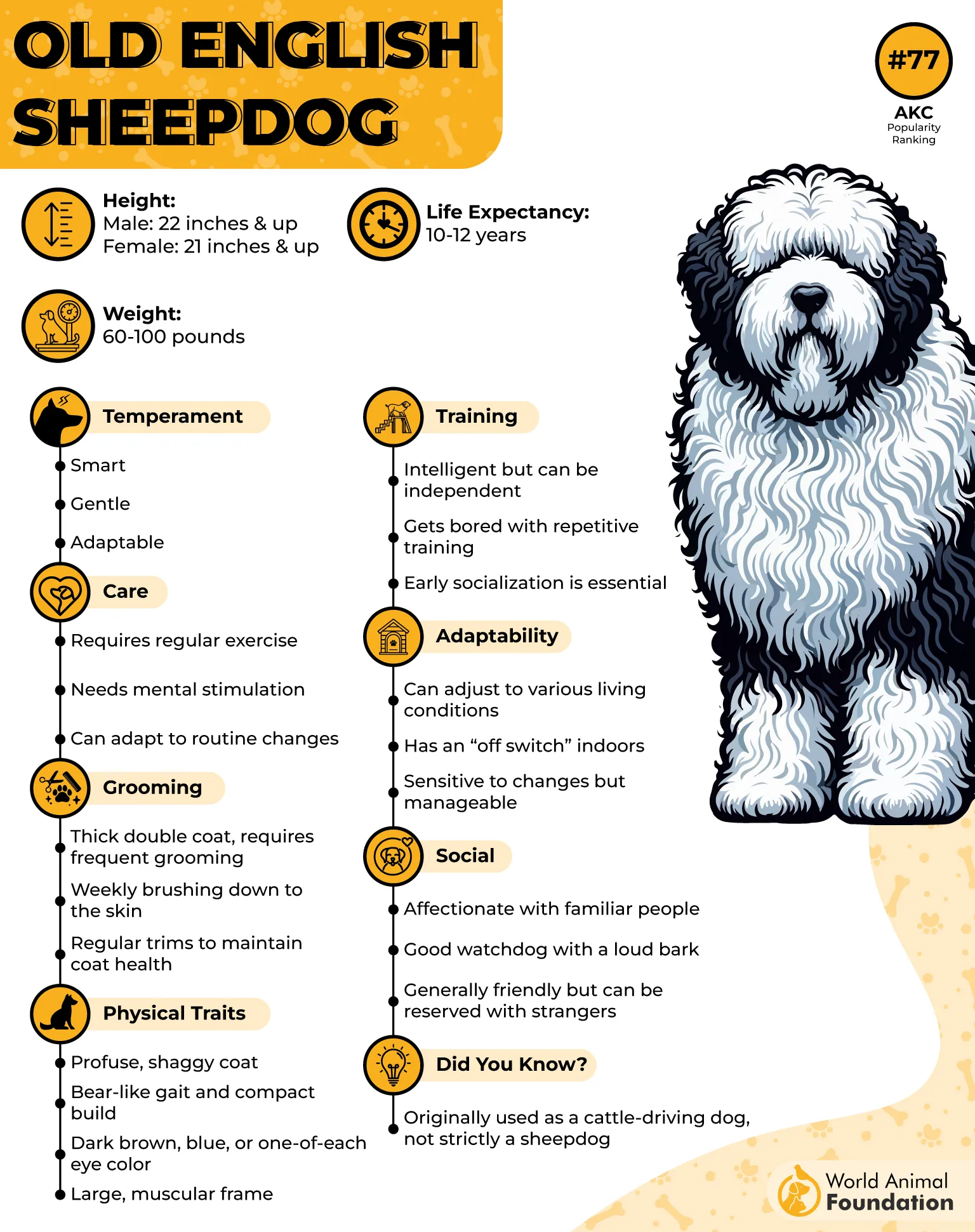
Grooming
The hallmark of the Old English Sheepdog is its thick, double-layered coat, which also demands serious upkeep. Plan to dedicate at least three to four hours a week to thorough brushing to keep mats and debris at bay. Using a double-sided grooming rake can help manage tangles, especially around trouble spots like the legs and belly.
Regular grooming helps keep a shaggy coat healthy and free from mats. While professional grooming and regular trims can make maintenance easier, consistent at-home care is essential to prevent skin issues hidden beneath their dense fur.
Fun Fact: The Old English Sheepdog’s profuse, shaggy coat originally served as insulation, keeping them warm while working outdoors in all kinds of weather.
2. Bearded Collie
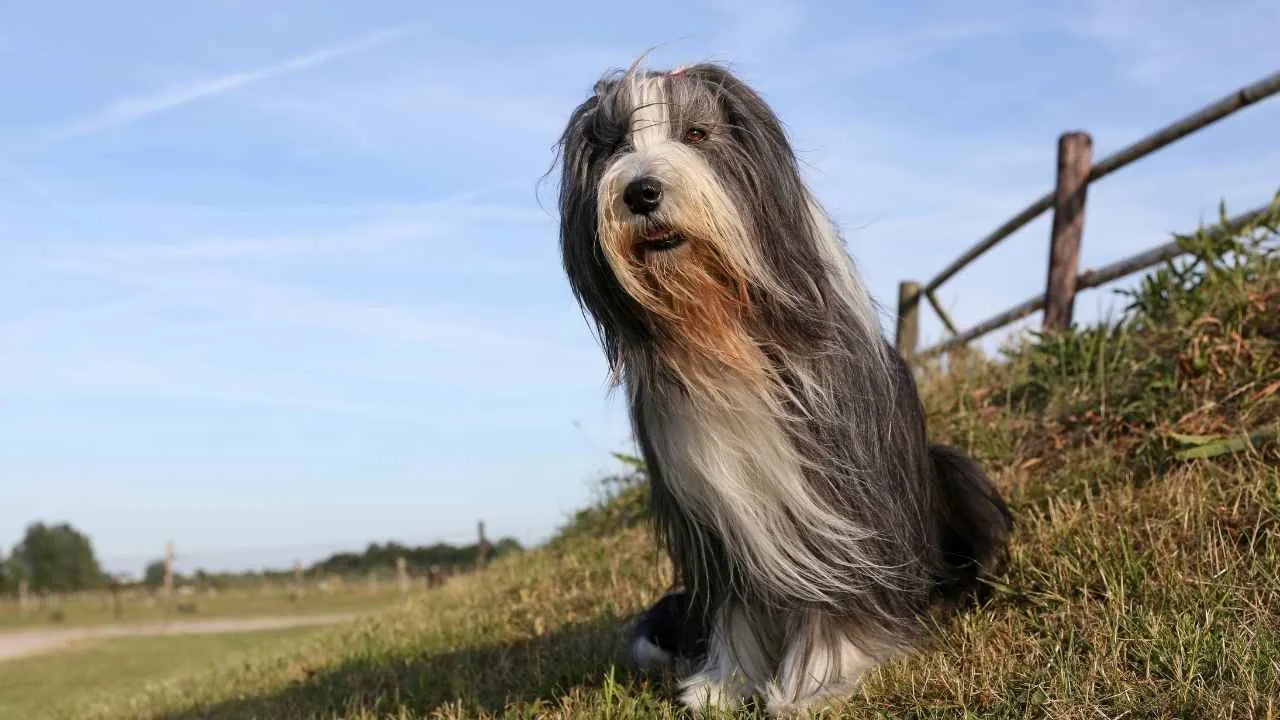
Lively, clever, and undeniably charming, the Bearded Collie is a shaggy-coated herding dog with roots in the rugged landscapes of Scotland. Originally bred to guide sheep across rocky terrain and through damp, chilly climates, this breed is built for endurance and agility.
Beardies are known for their cheerful, bouncing demeanor and strong work ethic. The AKC describes the Bearded Collie as intelligent, lively, and full of charm. Their expressive eyes peeking through a tousled fringe only add to their charismatic personality. Always up for fun, these dogs bring boundless energy and affection into any home.
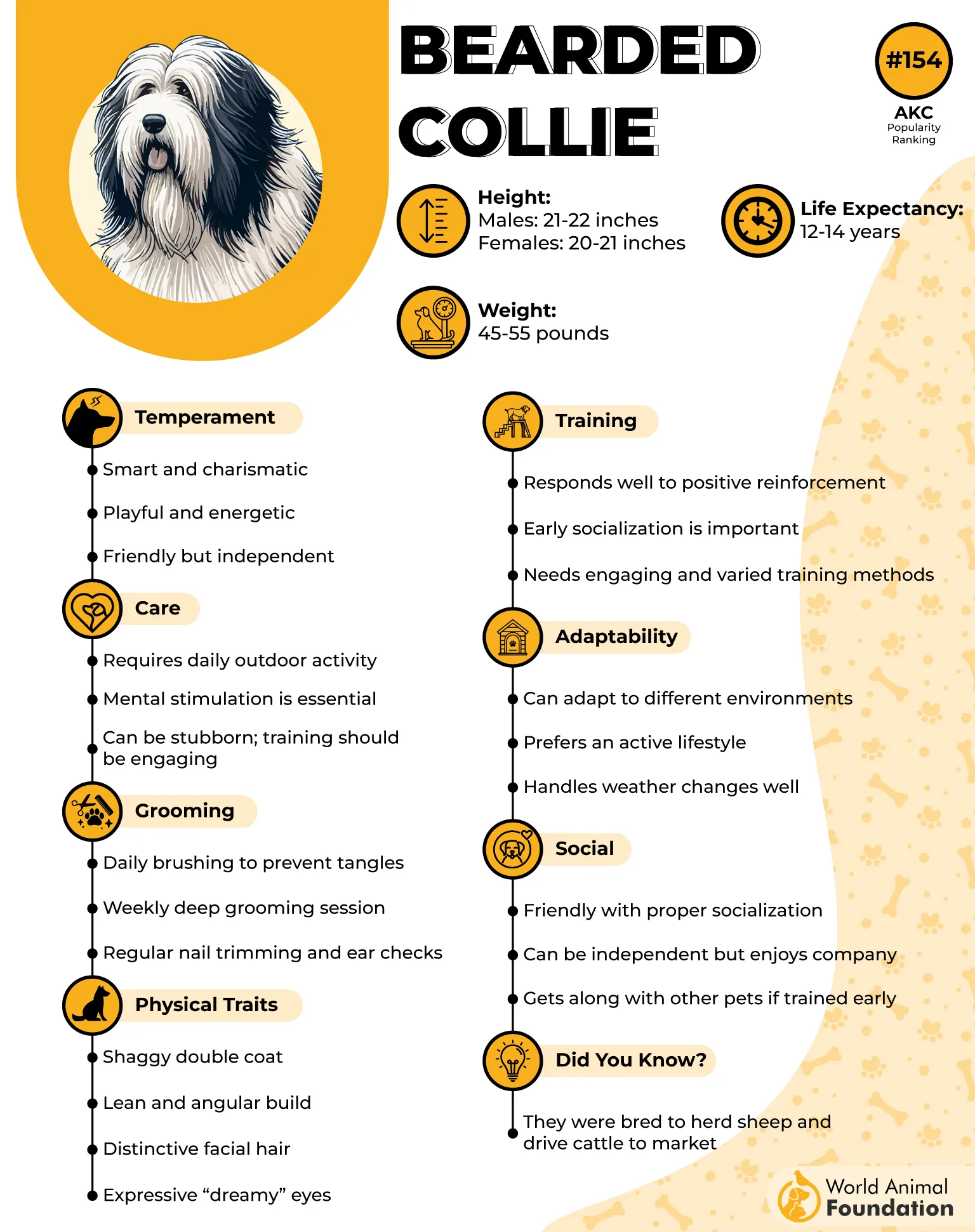
Grooming
With a flowing, double-layered coat that repels the elements, the Bearded Collie requires a thoughtful grooming routine. A quick daily brushing, especially after outdoor play, can prevent mats and remove debris.
Each week, set aside about 30 to 60 minutes for a deeper grooming session using a pin rake, comb, and detangling spray to maintain the coat’s condition. Routine nail trims are equally important to avoid discomfort and mobility issues.
Fun Fact: The Bearded Collie’s signature shaggy coat not only gives it a distinctive look but also protects it from Scotland’s cold, wet climate during its early days as a hardworking sheepdog.
3. Polish Lowland Sheepdog
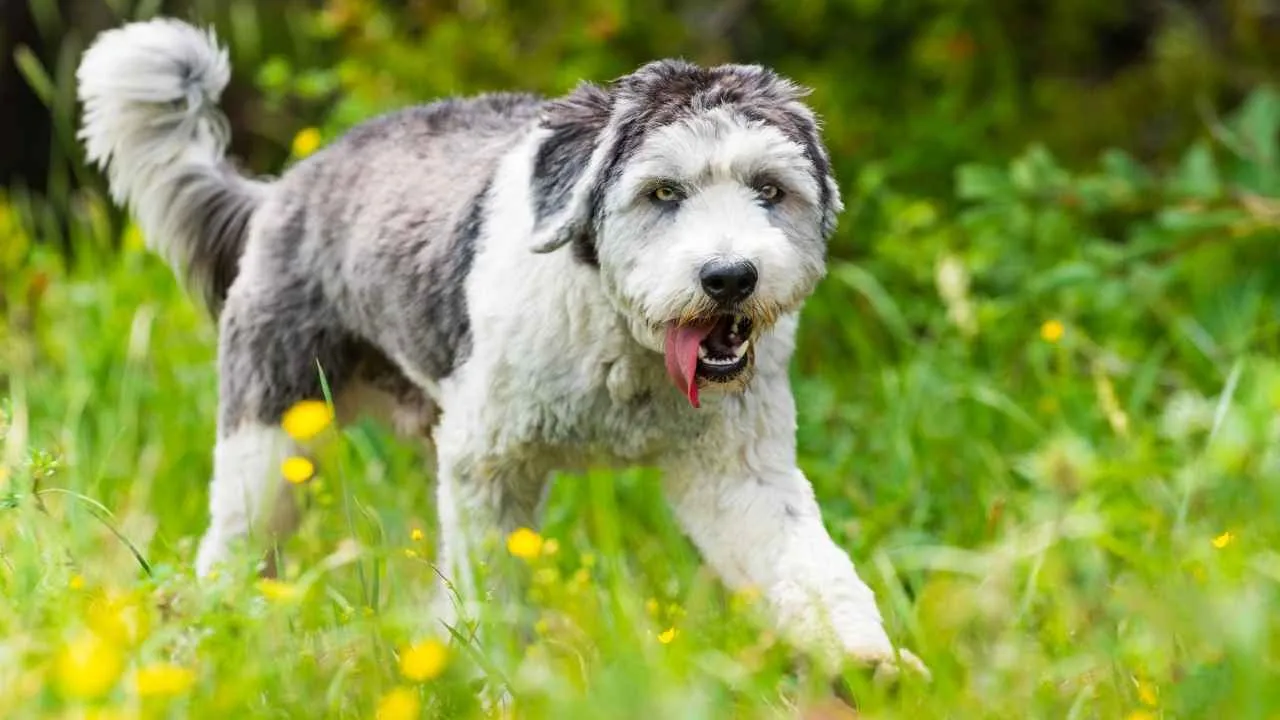
With its abundant coat and lively spirit, the Polish Lowland Sheepdog, often called the PON, is a compact, hardworking herding breed that’s as clever as it is shaggy. WebMD suggests that these shaggy pups are loyal herding dogs known for their compact size, adaptability, and strong desire to make their owners happy.
Hailing from Poland, these loyal dogs are confident with an energetic personality. PONs are intelligent and quick learners but can also be a bit headstrong, making early training and consistent engagement important. It’s important to begin grooming dogs early. Their playful nature and devotion make them delightful family companions.
Grooming
This fluffy dog’s thick, double-layered soft coat and shaggy appearance are striking but demand diligent care. At minimum, weekly brushing is necessary to prevent mats and to remove grass, debris, and tangles. The soft, fleecy, fluffy undercoat and shaggy outer coats tend to trap dirt easily, so using a detangling spray with natural ingredients can make grooming more comfortable.
Some owners opt for a “puppy clip” to shorten the coat for easier upkeep, though occasional brushing is still required. A complete grooming routine includes regular ear checks, nail trims, and daily dental care with dog-safe toothpaste.
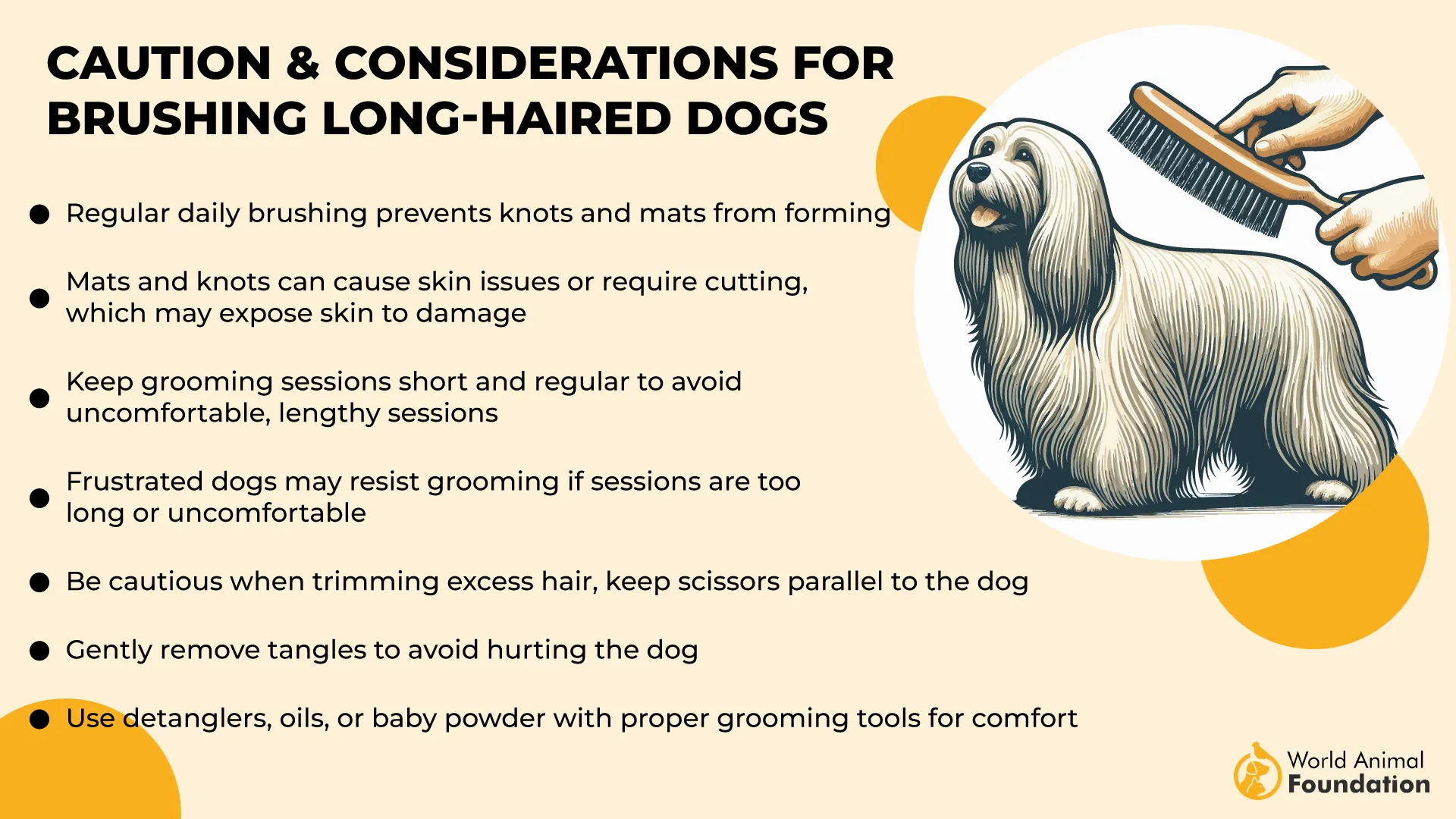
Fun Fact: This soft puppy coat tends to have a smooth texture and often lacks a full undercoat, making their grooming needs slightly different from their lighter-colored counterparts.
4. Briard
The Briard is a rugged yet affectionate herding breed known for its flowing, shaggy coat and deep loyalty to its human family. Originating in France, these dogs were once trusted guardians of flocks and farms, using their sharp instincts to protect livestock and property. Today, they bring that same devotion into the home.
Purina states that Briards thrive in a family environment and love being included in household activities. They are active and spirited dogs who delight in playing and engaging in fun. With expressive eyes peeking through long bangs and a watchful, sensitive nature, Briards are intelligent companions that respond strongly to their family’s emotions.
Grooming
The Briard’s impressive double coat requires regular upkeep to stay healthy and mat-free. Daily brushing is ideal, particularly using line-brushing techniques to reach down to the skin and prevent tangles. Their coarse, wavy fur can easily trap dirt, so occasional baths, especially after outdoor play, are essential.
Regular attention should also be given to trimming excess hair around the ears and paw pads, as well as checking for debris or buildup. While these shaggy dogs tend to require time-consuming grooming, it’s necessary for keeping their striking coat in top condition.
Fun Fact: This long-haired dog breed’s dense, weather-resistant coat was originally designed to protect them from harsh rain and cold while working in the French countryside.
5. Spanish Water Dog
With its dense, curly coat and lively personality, the Spanish Water Dog is a standout among shaggy breeds. Originally bred in Spain as both a herding dog and water retriever, this versatile breed is equally at home rounding up livestock or diving into lakes. Their boundless energy and sharp intelligence mean they excel in active households that can provide plenty of physical exercise and mental stimulation.
While friendly with families, they often form a particularly close bond with one person in the household. According to PDSA, Spanish Water Dogs are affectionate and sociable, getting along well with other animals and making great additions to family life.
Grooming
Unlike many shaggy breeds, the Spanish Water Dog’s woolly curls don’t require brushing, a welcome relief for busy pet parents. Instead, their unique coat benefits from occasional bathing and should be left to air dry to maintain its natural corded texture.
Grooming typically involves a full-body clip once or twice a year, with light maintenance in between. Regular trims by a professional groomer help keep their curls neat and healthy.
Fun Fact: The Spanish Water Dog belongs to the Gundog group and was originally used not only for retrieving from water but also for herding and guarding livestock.
6. Bouvier des Flandres
With its burly build and tousled coat, the Bouvier des Flandres brings both power and poise to the shaggy dog lineup. Originally developed in Belgium as a hardworking farm dog, this breed was tasked with everything from herding livestock to pulling carts and guarding property.
Today, Bouviers remain intelligent, vigilant, and deeply loyal. Though they can be protective of their home, they’re known to be calm and gentle with their families, balancing a work ethic with a composed demeanor.
Grooming
This double-coated breed is designed to shield them from harsh weather, but it requires routine upkeep to stay in top condition. Brushing once or twice a week with a slicker brush or pin brush helps prevent matting and tangling, especially in high-friction areas.
Pay special attention to the beard, which often needs extra cleaning, and keep their nails trimmed regularly to avoid discomfort. While the breed doesn’t shed heavily, neglecting coat care can lead to skin irritation and discomfort.
Fun Fact: The name of these guard dogs, “Bouvier des Flandres,” translates to “cowherd of Flanders,” highlighting its origins as a versatile, all-purpose farm dog.
7. Otterhound
The Otterhound is a rare and lovable breed with a rugged charm that’s hard to miss. Bred in medieval England to hunt otters, this large scent hound was made for water, complete with webbed feet and a dense, oily coat designed to repel moisture.
Sociable and full of character, Otterhounds are known for their cheerful demeanor and boundless energy. They need daily exercise and love outdoor activities like running or swimming, making them ideal companions for active families.
Grooming
Their weather-resistant shaggy double coats, which range from 4 to 8 centimeters in length, demand consistent care. Expect to brush your Otterhound at least two to three times a week to prevent matting and keep shedding under control.
Their bearded face, especially around the mouth, needs extra attention to avoid odor and irritation from food and drool buildup. Avoid frequent bathing, as it strips the coat’s natural oils. Check their ears and between their paw pads regularly to remove debris and keep them clean.
Fun Fact: Otterhounds retain moisture in their coats even after leaving the water, so don’t be surprised if they bring a little pond indoors after a swim!
Conclusion
Owning a shaggy dog breed comes with unique joys and responsibilities. From the thick, water-resistant coat of the Otterhound to the plush, high-maintenance fur of the Old English Sheepdog, these breeds require consistent grooming. Investing in a few basic brushes and detangling heavy double coats regularly not only keeps your dog looking great but also promotes healthy hair growth and helps mats regulate body temperature. Whether you’re harboring wet dog smell after a swim or brushing through an adult double coat, a proper grooming routine is essential.
While a shaggy dog means signing up for a little more upkeep, the reward is a loving, loyal companion with a one-of-a-kind look. For example, the Italian Bergamasco Sheepdog’s coat forms natural mats, while the Portuguese Sheepdog’s protective streak is reflected in its independent nature. Don’t forget to follow breed-specific tips, whether you’re trying to keep a Beardie’s coat tangle-free or managing the lowland sheepdog’s coat. Even rough-coated collies benefit from the protective shedding factor of a well-maintained coat. With care and attention, you’ll always have a shaggy dog ready for cuddles or the spotlight.


